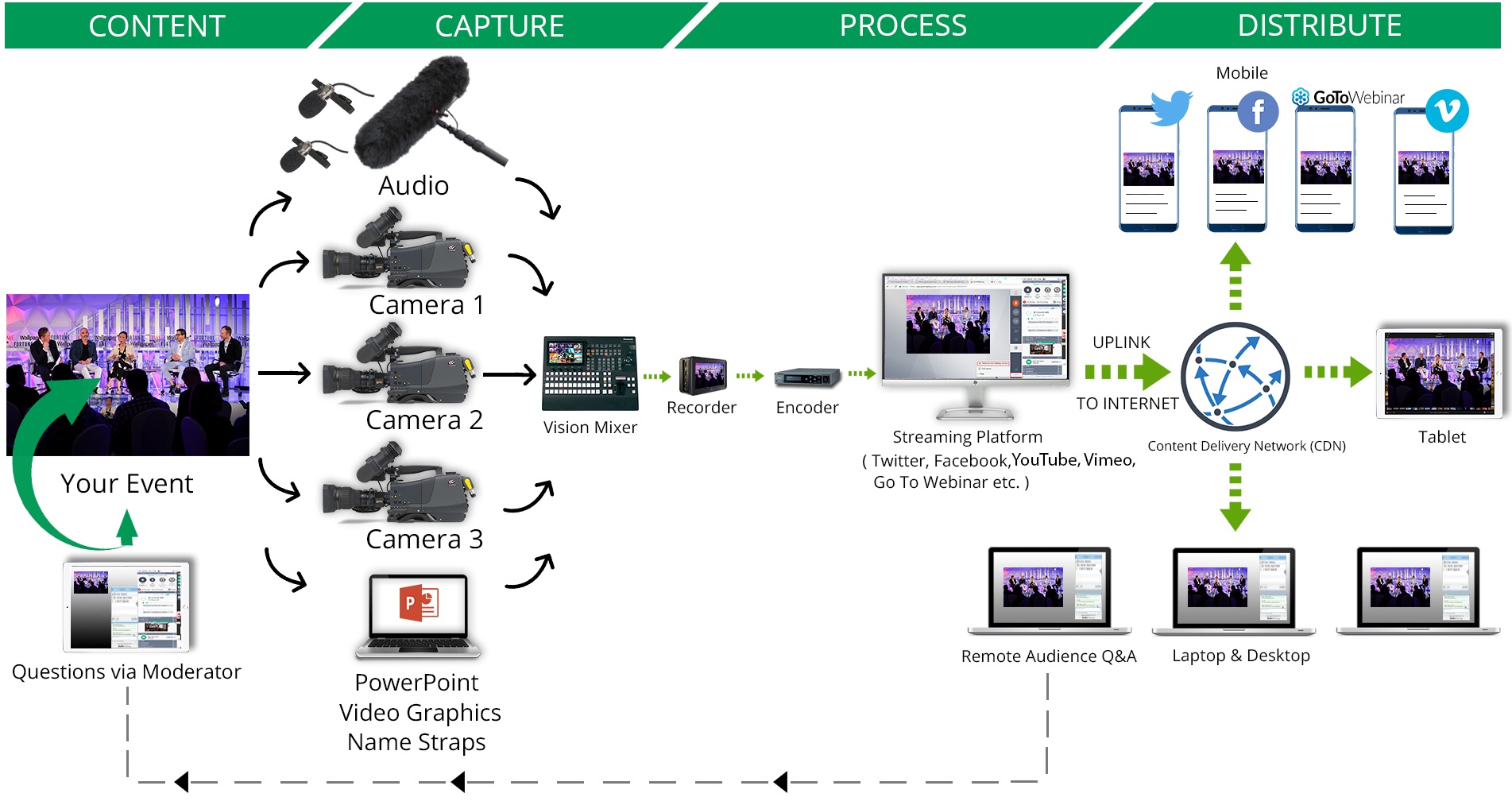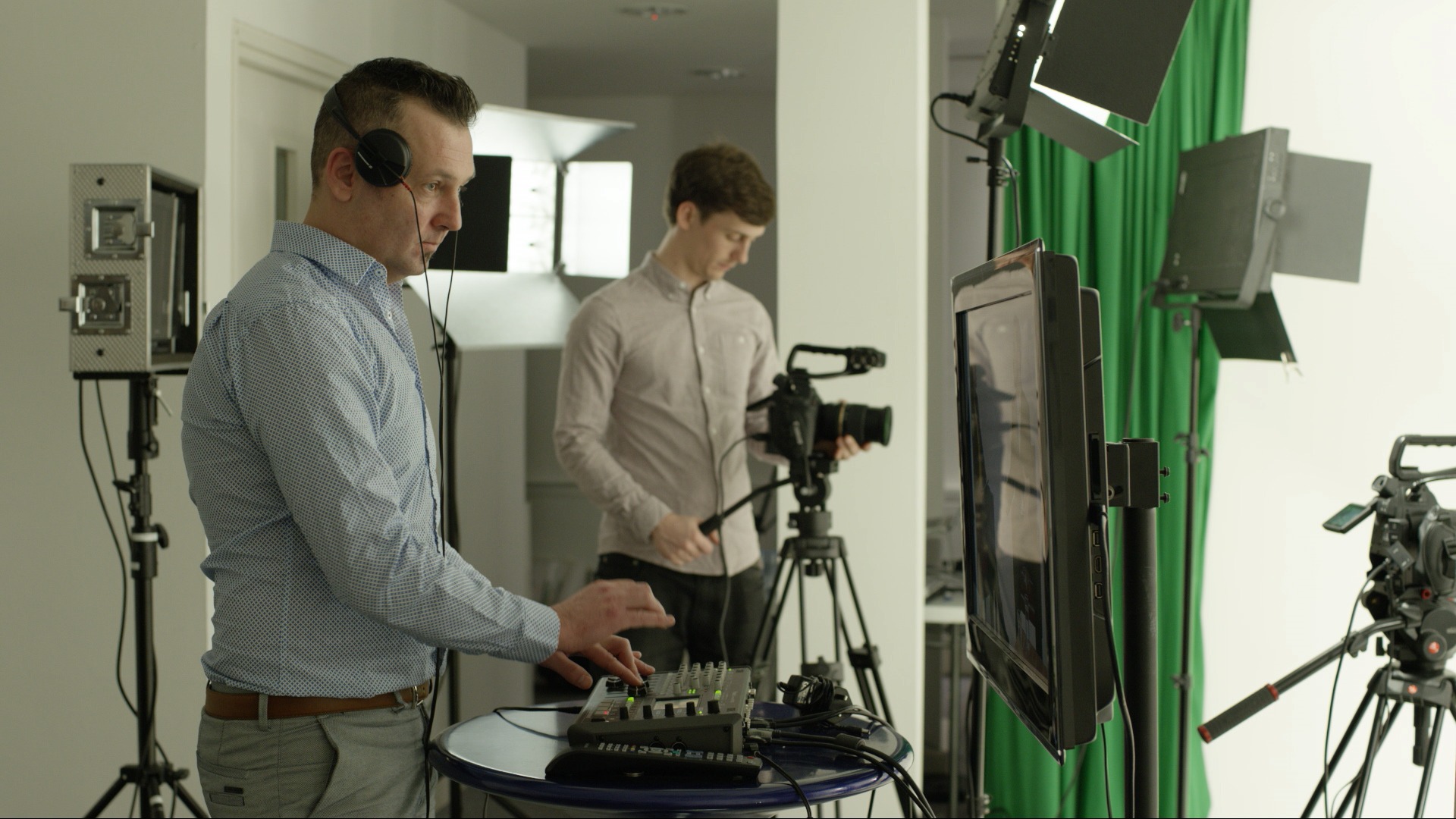1. CONTENT
A live event – a conference, panel discussion, webinar or webcast – held on location or in a live streaming studio streamed to a target audience.
2. CAPTURE
An on-location event is usually captured with a three camera set up – for a close-up shot, a wider shot of all presenters together and shots of the audience. Specific audio recording equipment is required to have a clear, high-quality sound output, usually provided by the local AV team.
In our studio, we're using three camera angles - one dedicated to the host presenter, the second is roaming between the guests accordingly, and the third one is a wide-shot, showing all the contributors in the panel discussion at the same time. As part of our studio package - we provide the high quality sound experience by one of our sound technicians.
3. PROCESS
To create a professional multi-camera streaming set-up, we use a video mixer. Its purpose is to switch between the cameras or any other video sources like a computer screen, Powerpoint presentations, pre-recorded videos and to overlay images and titles (name straps) on your broadcast. The video mixer helps to create a visually interesting and dynamic show.
An encoder routes the live footage (from the mixer) and is then converted into a streaming format ready to be broadcast via a video streaming platform.


